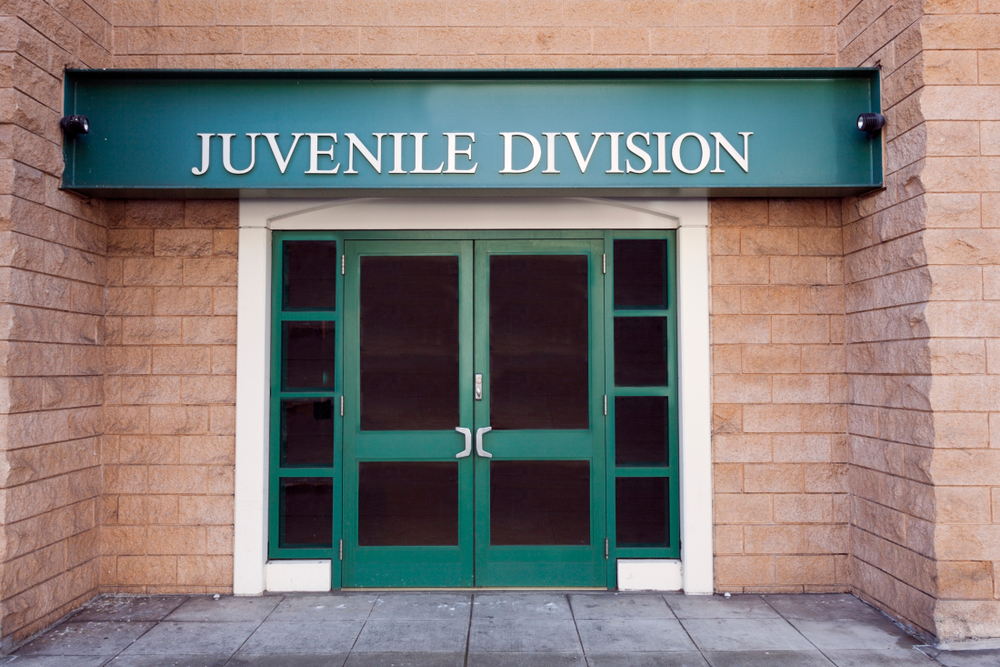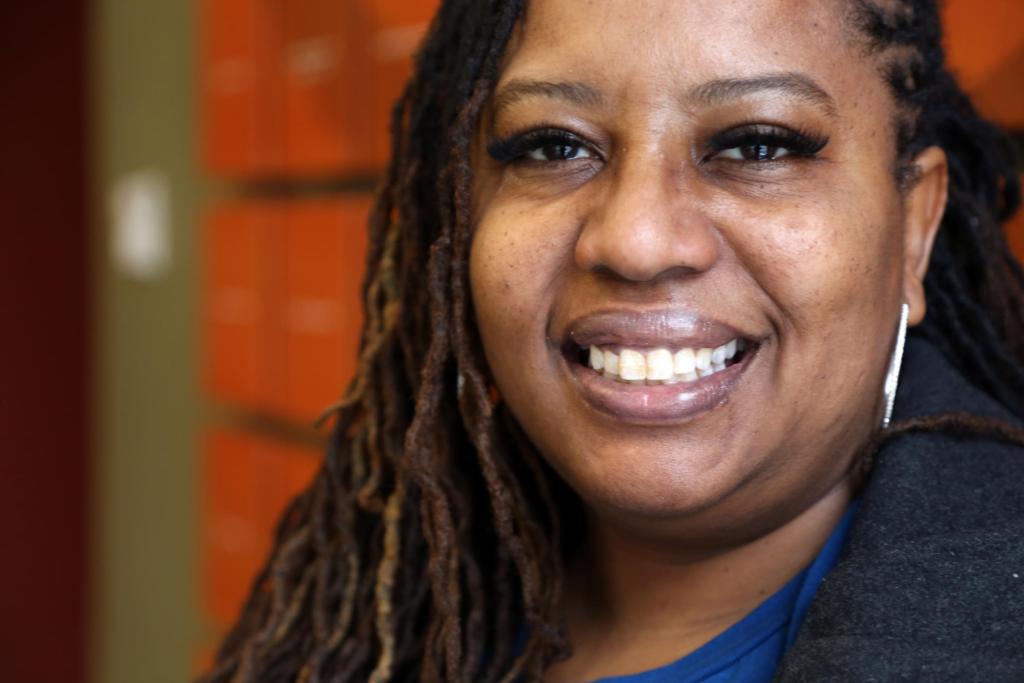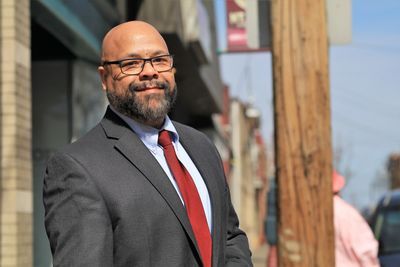Blog
Juvenile Justice Reform Through Kinship
How Kinship Care and Other Community-Based Supports Provide Trauma-Informed Alternatives for At-Risk Crossover Youth
With the enactment of SB 823 / AB 1868 in 2020, California has been phasing out its Department of Juvenile Justice (DJJ) and instead, creating ways to provide resources to counties for supervision of and service delivery to youth in conflict with the law. Reform measures such as this monumental legislation will significantly impact how the vulnerable population of youth within the juvenile justice system can receive the appropriate, trauma-informed supports needed to prevent them from experiencing further harm. With many states working to reform the historically racist and disproportionately punitive policies affecting youth of color involved in juvenile justice, the responsibility of true reform must be prioritized and intentionally strategized across systems, as most crossover youth or “dually involved” youth (about 92%)—a.k.a. youth who are involved in both the child welfare and juvenile justice systems—are first involved in the child welfare system, according to the University of Minnesota’s Center for Advanced Studies in Child Welfare. Furthermore, disproportionate rates of school discipline and criminalization of African American and Latinx youth compounds their risk.
FELIPE A . FRANCO
We need to stop the use of institutions in child welfare and juvenile justice and prevent the trauma of out-of-home placement.

As research continues to prove that children who commit crimes can be reformed and are better served close to home, kinship placements should be prioritized—especially for crossover youth—as the primary source of placement should a child need out-of-home care. The Family First Prevention Services Act (H.R. 5456; P.L. 115-123) exemplifies the prioritization of kinship, encouraging states to utilize kinship placements, as kinship caregivers can be afforded the proper resources and finances to care for their kinship youth as opposed to placing youth in congregate settings—which in turn leads to increased involvement in juvenile justice.
Juvenile justice and child welfare reform advocates continue to promote this critical ideal for system reform and transformation: Family and community are crucial to supporting children and youth at risk of becoming dually involved. Moreover, engaging communities at a local level will help to inform the systems approach at the state and federal levels toward transforming the way they advocate for children and youth who are at a greater risk of facing both systems.
ASCI spoke with local and national leaders in juvenile justice and child welfare to discuss the various ways we can and must work across sectors to protect and support both youth who are at risk and youth currently dually involved in these systems—especially by prioritizing kinship care and community supports.
Local Lens: Community Engagement as Reform
Community organizations provide direct supports for youth that can positively impact the trajectory of their lives, as well as an alternative to placement or systems involvement. Much of this work focuses on decriminalizing youth behavior and instead supporting them in ways that are trauma-informed. Because most youth can be held accountable and supported in the context of family and community supports—through processes such as restorative justice and social-service interventions—it is important to utilize community-based supports as a means to advocate for youth alternatives to placement while also working to support those who care for them so families can thrive holistically.
Brandi Fisher, CEO of the Alliance for Police Accountability (APA)
Brandi Fisher believes that the best way to support youth in preventing system involvement is by engaging them and elevating their voices to be advocates of change within their communities.

“The Alliance for Police Accountability focuses on helping young people become advocates themselves and for themselves, especially those youth between the ages of 13-18,” Fisher explains. The organization particularly focuses on this age group because they are more likely to be funneled through the criminal justice system.
“One of the primary, proactive things that we do as an organization [to support youth] is through our program called Activism is Love, which is a training institute that we use to equip youth who come in and see an issue that’s near and dear to their hearts that they would like to change, and we walk them through and teach them how to do that,” Fisher continues.
“We teach them how to build a campaign, how to build a website, connect them to the political officials they need to be connected to and walk them through how it works as opposed to telling them what to do, so when we’re not around, they’re able to advocate for themselves, and to also get out of this idea that [youth] don’t know what they need or what they want, but to empower them to use their voices. They have a voice, they just need somebody to help show them how to use it.”
In addition to providing youth an outlet for advocacy, the APA works with other local organizations and schools to change policies that contribute to youth involvement in the legal system and disproportionately impact BIPOC youth.
The APA’s stance is that police do not belong in schools. As such, the APA has been working to remove police from local school districts and replace them with social workers and other practitioners for a more trauma-informed approach to holding youth accountable to their actions as they continue to develop.
“The response to youth making [poor choices] should not be criminalization. It shouldn’t be being arrested. It shouldn’t be getting a record,” Fisher insists. “It should be really talking to these young people and asking, ‘Why?’ instead of just looking at the ‘what.’ We look at the result of what’s happening, but we don’t go back to ask, ‘Why?’ So, we are replacing police officers with social workers and people who can connect with our youth.”
As a passionate advocate for social justice with a heart for youth, Fisher believes the best way to advocate for youth is to work intentionally across sectors to ensure they receive the best support possible.
“We need to work together more,” she says. “I compare it to a body—you have hands, eyes, mouth, feet, ears, etc.—that’s how I look at everyone that works with young people. We’re all needed. We’re just a different part of the body. We all play different roles, but as long as we stay focused on our calling, and we make sure we work in the area we’re called in with excellence and with our fullest capabilities and bring them all together, that’s how you tear these systems down and really change them from the inside out.”
Dr. Jamil Bey, President and CEO of UrbanKind Institute
Dr. Jamil Bey suggests that investing in communities will ultimately create real change that will provide opportunities for youth to thrive.

“I think we as the state of Pennsylvania, we’ve failed tremendously in valuing young people and the opportunities that young people have at the start,” he offers. “We do not provide spaces for young people to thrive and then they’re put in situations where their options are so limited. When we think about what young people are capable of…juvenile brains are still forming. There’s not an understanding of consequences. It’s not there yet—the science backs this up—and we put young people in situations where we really put heavy demands on them, especially in circumstances when [they] have been deprived of access to what we [call] the ‘finer things’ or things that they should have, and they don’t always have a clear path to these things.”
As a former educator, Dr. Bey witnessed the inequities facing children and youth of color, which make them more susceptible to involvement with juvenile justice and child welfare. As such, Dr. Bey emphasizes the need for policy change to significantly reform juvenile justice and provide children, youth and families with equitable opportunities to thrive.
“What I saw in the work that I was doing—and one of the reasons that I got out of public education and started doing more policy work—was that we need to provide a better platform, a better space for young people. So, our work is to make sure that families can thrive, especially [through] the lens of young people,” Dr. Bey continues. “And in that, what does that mean for the neighborhood? What options do the kids have for playtime? What spaces do they have for play? How are they supported in after-school programs and out-of-school times? How are they given exposure to a range of careers, a range of art, activities that connect to who they see themselves as. And one of my core beliefs is the greatest thing that we can give young people: the confidence to fail. What that means is that they’re trying new things. They’re exploring their world. And when they can do that in a situation where they do [make mistakes], we use that as a learning experience rather than as punitive.”
Dr. Bey additionally expressed that we must not see the problem as a problem of bad kids. If the viewpoint is that kids can’t make good choices, “we’re going to fail,” he says. “But if we see the problem as a need to provide opportunities for young people to thrive, how do we invest in that? What does that look like? Then, I think we have a fighting chance.”
Cross-sector collaboration is necessary to provide youth, families and communities holistic opportunities to thrive. Dr. Bey explains that by working together to provide access and opportunities to children and families, we can work proactively to prevent youth from feeling they must make adult decisions, which may put them at risk of becoming system-involved—and that must happen at the policy level.
“I think the big picture that we have to see is this ecosystem of thriving families. What [does] that look like?” he asks hypothetically. “We’ve done a lot of harm in the policy decisions [made] over the past few decades, in the past few centuries, to families. And so, [justice] would be repairing those harms and [equity] would be providing those spaces where families can thrive. Economic justice, political justice, educational justice, environmental justice…there’s so much work to be done on all these fronts. Transportation justice, income justice…there’s so much harm in a system that has deliberately disenfranchised and disconnected folks and made it so difficult for them to be included as full participants.”
Dr. Bey urges that, without a deliberate effort to repair injustices and provide access, we’re not going to achieve the goal of preventing youth from entering these systems. “An equitable and just system makes good on the promises by repairing those families that have been harmed by bad policies since the country started.”
State and National Lens: Kinship Care and Cross-Sector Collaboration as Reform
Growing research continues to support that restorative practices allow youth to remain in their homes and schools, help systems-involved families heal and keep communities intact. As such, prioritizing kinship care as a means to prevent out-of-home youth from becoming dually involved is reflected in juvenile justice and child welfare organizations’ practices and priorities nationwide. Additionally, models like the Crossover Youth Practice Model (CYPM) exemplify the need for cross-sector collaboration in advocating for youth to remain with family and community at all costs when possible. ASCI spoke with two leaders in the sector working to improve the lives of youth and prevent them from becoming dually involved—or system-involved at all—through their various youth and family initiatives.
Felipe A. Franco, Senior Fellow for Young Adult Practice, Jim Casey Youth Opportunities Initiative
The Annie E. Casey Foundation

ASCI: How can reform measures like diversion programs, restorative justice and community-based programming prevent youth from entering the juvenile justice system? How can these measures work to reduce the disproportionate number of children of color represented in the system?
Felipe Franco: Young people have the best chances to grow and thrive when they are with loving, supportive families and in healthy, strong communities. Supporting families to stay together is the most effective way of helping young people transition successfully to adulthood. This aligns with A Second Chance, Inc.’s mission and focus on providing strengths-based, trauma-informed, culturally competent supports and stability to prevent youth from entering systems. So, all the tactics and approaches that you’ve mentioned—diversion programs, restorative justice and community-based programming—are opportunities for the juvenile justice system to reduce the likelihood of young people being removed from their families.
The good news is that in the last 10 years we have seen a significant decrease in the number of young people in juvenile justice institutions. The bad news is that still the United States has more youth and young adults in institutions than any other country — and most are Black, Latino and Native American.
This overrepresentation of youth of color in child welfare and in the juvenile justice system is unacceptable. As we know that differential responses, restorative justice and diversion programs not only erase these disparities, but ensure all young people who experience the child welfare or juvenile justice systems have equitable access and opportunities to grow up in families.
Many adolescents and young adults who end up in the child welfare or juvenile justice systems do so because of behavioral challenges and conflict at home, these families need the right supports and the right programs. Their families need help in nurturing healthy relationships with these young people who hurtling through adolescents and into adulthood. Parents need an understanding of adolescent brain development during adolescence and young adulthood, and a network of extended family and positive adults to support them and their sons/daughters. When those supports are in place, young people do much better. We know and we have heard directly from young people that it’s important for them to feel part of something bigger, to feel part of a community and to stay connected their cultural and historical roots. Youth and young adults need to also feel affirmed in terms of their culture, ethnicity and sexual orientation as an essential step in developing their identity.
We need to stop the use of institutions in child welfare and juvenile justice and prevent the trauma of out-of-home placement. Institutions are detrimental to youth’s development, and if youth need to ever be placed in a group setting, it should be home-like, small and close to their home and families. The Juvenile Justice system also needs to stop its reliance in prescribing intervention and programs without any familiar, community or cultural roots, that at the end of the day undermine the ability of families and communities to develop their own solutions. We need to start working with families, youth and communities.
I know we can do better because in New York City we were able to reduce by 65% the likelihood of a child being in detention and the cases in placement by 75%. And we eliminated the use of large state institutions, ensuring that all NYC juvenile delinquents are placed in small, home-like settings, close to home, close to their families and kin.
Click here to read the full interview with Felipe Franco.
Macon Stewart, MSW, Deputy Director for Multi-System Operations
Center for Juvenile Justice Reform at Georgetown University

ASCI: Can you please tell us about your role and work at the Center for Juvenile Justice Reform?
Macon Stewart: In my role, I oversee a number of different programs. Two of them are multi-systems in nature in that they deal with improving services and supports to communities through technical assistance to enhance their ability to support young people who are involved in more than one system of care, primarily juvenile justice and child welfare.
Most of my work, speaks to young people who we call crossover youth or dually-involved youth. There’s also another body of work that I oversee that deals with providing support to rural communities specifically around multi-systems youth, as part of the Center for Coordinated Assistance to State’s a partnership with American Institutes for Research and Council of Juvenile Justice Administrators funded through the Office of Juvenile Justice and Delinquency Prevention. Lastly, we’re starting a new program that focuses on addressing the racial-ethnic and socioeconomic disparities of young people involved in the juvenile justice system, using a systems improvement methodology called Plan-Do-Study-Act. These are the three programs that are under my portfolio at the center.
ASCI: How can we work across sectors to meet the needs of youth who are at risk of being considered crossover youth?
MS: People who work within the systems have to realize that number-one: These are primarily the same young people. For example, I may work in the juvenile justice field, but nine times out of 10, the young person I’m working with at some point in their life has been involved with the child welfare system, whether it’s just a referral to CPS or actually having an open case. They may not have one now, but they likely have a history of engagement at some level. And for young people who are involved with the child welfare system, they are at risk of becoming involved with the juvenile justice system the longer they remain in the child welfare system.
Ultimately, regardless of which system you encounter first, by virtue of the systems’ inability to adequately serve youth in a holistic way, they become more vulnerable to interacting with a second system of care. To me, that’s why the onus is on all of these systems to work collaboratively in figuring out, how we mitigate the likelihood of a young person going into the second system of care because the research tells us they fair worse. This is referencing young people engaging with systems that can take custody of them – which is the child welfare and juvenile justice. The reality of managing the case of a youth in child welfare is difficult. If I’m a child welfare worker (and I have been), and I’m having a lot of challenges with a young person because of behavior issues, etc., you often times feel like the thing to do is to have them detained or have them tethered to a delinquency case, which gives you more teeth to control the young persons behavior. However, the reality is it’s a quick fix for the moment but in the long-term that young person is at greater risk for more negative outcomes due to things such as the peer contagion factor.
All of us enter into this work to do better. And if we collectively understood the long-term effects of having multiple systems involved with young people, I think it would impact some of the policy and practice decisions being made. It should impact how direct service staff work with youth directly and should push leaders to enhance opportunities for sharing resources and funding in a way that looks at prevention of system entry versus requiring formal involvement.
We have to listen to youth and their families. This young people and families are the consumers of our products (the system) and they are telling us it’s not working and we keep trying to use “stop leak” instead of replacing the whole tire (as a metaphor). We are trying to repair systems that were built to be oppressive. We are achieving the intended results. Now that we are seeking different results we need to deconstruct and rebuild these systems. The challenge is, we can’t start from scratch.
I think about when I was a social worker, I don’t know that I ever thought about the fact that where my young people were was because we had failed them as a collective. And I was complicit in that. Even as a worker regardless of how I got the case, how long I had it, I was still complicit in that, and I was part of the problem. And I think that’s what people don’t think about. They don’t think about the things that are the real-life tangible things that make a difference for young people that’s not a service, it’s not a support. Young people have received more than enough therapy to last them a lifetime. There are other things that they need that I don’t know that procurement can provide. And they need relationships, and they need people who will believe them and who will stand with them.
Click here to read the full interview with Macon Stewart.
This article was originally featured in the National Kinship Review. Sign up below to access more exclusive content!